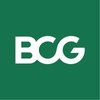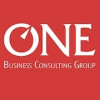Filter interviews by
ONE BCG Finance Intern Interview Questions and Answers
ONE BCG Finance Intern Interview Experiences
1 interview found
(2 Questions)
- Q1. What is reverse charge mechanism?
- Ans.
Reverse charge mechanism is a system where the recipient of the goods or services is liable to pay the tax instead of the supplier.
Under reverse charge mechanism, the recipient of the goods or services is responsible for paying the tax to the government instead of the supplier.
This mechanism is commonly used in B2B transactions where the recipient is a registered business entity.
It helps in preventing tax evasion and e...
- Q2. What are different TDS Rates and their Sections?
- Ans.
TDS rates vary based on the type of income and are governed by different sections of the Income Tax Act.
TDS rate for salary income is as per the individual's tax slab
TDS rate for interest income is usually 10%
TDS rate for rent income is 10% if the annual rent exceeds Rs. 2.4 lakhs
TDS rate for professional fees is 10%
TDS rate for commission income is 5%
Top trending discussions






Interview questions from similar companies

I applied via Approached by Company and was interviewed in Mar 2023. There were 3 interview rounds.

General Aptitude test on Finance, language and logical reasoning
(5 Questions)
- Q1. Journals Entries
- Q2. Finance Scenario Questions
- Q3. Eligibility for Relocation
- Q4. Treatment of different costs
- Ans.
Different costs are treated differently based on their nature and impact on financial statements.
Different costs are classified as either variable or fixed costs.
Variable costs change with the level of production or sales, while fixed costs remain constant.
Some costs are considered direct costs, directly attributable to a specific product or service.
Other costs are indirect costs, not directly traceable to a specific p...
- Q5. Revenue recognition
Interview Preparation Tips
- Accounts Payable
- Costing
- Journal entries
- Reconciliation

I was interviewed in Jan 2025.
Group discussions
Topic based GD
Case study GD
Debate style GD
Problem solving GD
(5 Questions)
- Q1. Is AI a threat to human job
- Ans.
AI poses a potential threat to certain jobs but also creates new opportunities for human workers.
AI can automate repetitive tasks, leading to job displacement in certain industries
However, AI also creates new job opportunities in fields such as data analysis, AI development, and machine learning
Human workers can focus on tasks that require creativity, critical thinking, and emotional intelligence, areas where AI curren...
- Q2. Can 5G revolution technology
- Ans.
Yes, 5G technology has the potential to revolutionize various industries with its high speed, low latency, and massive connectivity.
5G technology enables faster data speeds, lower latency, and increased network capacity.
It can support the Internet of Things (IoT) devices, autonomous vehicles, smart cities, and virtual reality applications.
5G can improve efficiency in industries like healthcare, manufacturing, and trans...
- Q3. How important is data privacy in today world
- Ans.
Data privacy is crucial in today's world to protect personal information from misuse and unauthorized access.
Data privacy helps prevent identity theft and fraud
It ensures confidentiality of sensitive information such as financial records and medical history
Regulations like GDPR and CCPA require organizations to protect consumer data
Data breaches can have severe consequences for individuals and businesses
Maintaining dat...
- Q4. Blockchain - just hype or the future
- Q5. Blockchain- just hype or the future
(2 Questions)
- Q1. Tell me about yourself Why do you want this job
- Ans.
Experienced finance professional with a strong track record in budgeting, forecasting, and financial analysis. Passionate about driving business growth through strategic financial management.
I have over 8 years of experience in finance, including roles in budgeting, forecasting, and financial analysis.
I am skilled in financial modeling and have a proven track record of improving financial performance.
I am passionate ab...
- Q2. I am deepanshu Gupta and I have Fraser I have skills in football and I enjoy working on
Aptitudes test assess a person logical reasoning problem solving and analysis skills they are commonly used in job recruitment collages and admissions
Interview Preparation Tips
Enhance skill
Network
Prepare for interview

Finance Executive Interview Questions & Answers
Virtusa Consulting Servicesposted on 13 Jan 2025
I applied via campus placement at Institute of Cost and Works Accountants of India (ICWAI) and was interviewed in Dec 2024. There were 3 interview rounds.
Online assessment (Technical, English, Reasoning)
(6 Questions)
- Q1. Difference between Balance sheet and trial balance
- Ans.
Balance sheet shows assets, liabilities, and equity at a specific point in time. Trial balance lists all ledger accounts with their balances.
Balance sheet is a snapshot of a company's financial position at a specific point in time.
Trial balance is a list of all ledger accounts with their balances to ensure debits equal credits.
Balance sheet includes assets, liabilities, and equity sections.
Trial balance is used to prep...
- Q2. Standard costing formula
- Ans.
Standard costing formula calculates the expected cost of a product based on predetermined standards.
Standard costing formula includes direct materials, direct labor, and overhead costs.
It helps in comparing actual costs with standard costs to identify variances.
Formula: Standard Cost = Standard Quantity of Inputs x Standard Price of Inputs
- Q3. Journal entries for Prepaid Accruals Depreciation with accumulated depreciation concept Provision for Bad debts DTA and DTL
- Ans.
Explanation of journal entries for Prepaid, Accruals, Depreciation, Provision for Bad debts, DTA, and DTL.
Prepaid expenses are initially recorded as assets and then expensed over time as they are used up.
Accruals are expenses incurred but not yet paid or revenue earned but not yet received.
Depreciation is the allocation of the cost of a fixed asset over its useful life, with accumulated depreciation representing the to...
- Q4. Case study on Ind AS 115
- Q5. Preparation of balance sheet and computation of various ratios
- Ans.
Preparation of balance sheet involves listing assets, liabilities, and equity. Ratios are computed using financial data from the balance sheet.
List all assets, liabilities, and equity on the balance sheet
Calculate various financial ratios such as current ratio, debt to equity ratio, and return on equity
Use formulae like Current Ratio = Current Assets / Current Liabilities
Interpret the ratios to analyze the financial he
- Q6. Accounting principles
(6 Questions)
- Q1. What is DTA and DTL
- Ans.
DTA stands for Deferred Tax Asset and DTL stands for Deferred Tax Liability.
DTA is an asset recorded on a company's balance sheet that may be used to reduce taxable income in the future.
DTL is a liability recorded on a company's balance sheet that represents taxes that have been accrued but not yet paid.
DTA arises when a company has overpaid taxes or has tax deductions that exceed its taxable income.
DTL arises when a c...
- Q2. Accounting entry for accumulated depreciation
- Ans.
Accumulated depreciation is a contra asset account that represents the total depreciation expense taken on an asset since it was acquired.
Accumulated depreciation is recorded on the balance sheet as a reduction from the gross amount of fixed assets to arrive at the net book value.
The accounting entry for accumulated depreciation involves debiting the depreciation expense account and crediting the accumulated depreciati...
- Q3. Few resume based questions
- Q4. Standard costing formula
- Ans.
Standard costing formula calculates the expected cost of a product based on predetermined standards.
Standard costing formula = Standard cost of direct materials + Standard cost of direct labor + Standard manufacturing overhead cost
Standard cost of direct materials = Standard quantity of materials x Standard price per unit
Standard cost of direct labor = Standard hours of labor x Standard rate per hour
Standard manufactur...
- Q5. Difference between budgeting and forecasting
- Ans.
Budgeting involves setting financial goals and allocating resources, while forecasting predicts future financial outcomes based on past data and trends.
Budgeting is a plan for how to allocate resources and achieve financial goals
Forecasting predicts future financial outcomes based on past data and trends
Budgeting is typically done on an annual basis, while forecasting can be done on a shorter or longer term basis
Budget...
- Q6. Meaning of variance analysis
- Ans.
Variance analysis is a technique used to identify and analyze the difference between planned financial outcomes and actual results.
Variance analysis helps in understanding the reasons for deviations from budgeted or expected figures.
It involves comparing actual financial performance with budgeted or standard performance.
Common types of variances include price variance, quantity variance, and mix variance.
Variance analy...
Interview Preparation Tips
First technical interview was for 45 - 50 mins
Second technical interview was for 20 mins

(5 Questions)
- Q1. Explain budgeting
- Q2. Explain forecasting
- Q3. Explain revenue recognition
- Q4. Rent accured ledger entry
- Q5. Why is asset recognised or depreciated in balance sheet

(2 Questions)
- Q1. Account payable?
- Q2. Difference between Profit & Revenue

(1 Question)
- Q1. What is the capital market?

(2 Questions)
- Q1. What is contingent liabilities
- Ans.
Contingent liabilities are potential liabilities that may arise in the future depending on the outcome of certain events.
Contingent liabilities are not recorded on the balance sheet but disclosed in the footnotes.
They are dependent on a future event occurring or not occurring.
Examples include lawsuits, warranties, and guarantees.
If the contingent liability is probable and the amount can be estimated, it should be recor
- Q2. What is provision
- Ans.
Provision is an amount set aside in financial statements to cover anticipated future expenses or losses.
Provision is a liability that is recognized on the balance sheet.
It is used to account for potential future expenses or losses that are uncertain but likely to occur.
Examples of provisions include bad debt provisions, warranty provisions, and restructuring provisions.
Interview Preparation Tips
Skills evaluated in this interview

It represents a person's level of competency to perform a certain type of task. Aptitude tests are often used to assess academic potential or career suitability and may be used to assess either mental or physical talent in a variety Domains
(4 Questions)
- Q1. Asking many questions like introduction
- Q2. What is your Qualification
- Q3. Related to our qualification background
- Q4. Our skills and knowledge cheking
Involve working through a business problem or scenario with the interviewer to reach a logical conclusion.

I applied via Referral and was interviewed in Feb 2024. There was 1 interview round.
(2 Questions)
- Q1. Management fee how is calculated
- Q2. Private equity and real estate funds
Interview Preparation Tips
ONE BCG Interview FAQs
Tell us how to improve this page.
ONE BCG Interviews By Designations
- ONE BCG Consultant Interview Questions
- ONE BCG District Manager Interview Questions
- ONE BCG Finance Intern Interview Questions
- ONE BCG Front end Developer Interview Questions
- ONE BCG Quality Analyst Interview Questions
- ONE BCG Senior Software Engineer Interview Questions
- ONE BCG Software Engineer Interview Questions
Interview Questions for Popular Designations
- Finance Executive Interview Questions
- Financial Analyst Interview Questions
- Finance Manager Interview Questions
- Accounts & Finance Executive Interview Questions
- Accounts & Finance Manager Interview Questions
- Assistant Manager Finance Interview Questions
- Senior Executive - Finance Interview Questions
- Financial Accountant Interview Questions
- Show more
ONE BCG Finance Intern Interview Process
based on 1 interview
Interview experience
Interview Questions from Similar Companies
|
Software Engineer
28
salaries
| ₹3.6 L/yr - ₹12 L/yr |
|
Software Developer
10
salaries
| ₹5 L/yr - ₹8.6 L/yr |
|
Business Analyst
9
salaries
| ₹5.7 L/yr - ₹12 L/yr |
|
Quality Analyst
8
salaries
| ₹3.6 L/yr - ₹7 L/yr |
|
Senior Quality Analyst
7
salaries
| ₹5.6 L/yr - ₹11 L/yr |

McKinsey & Company

BCG

Bain & Company

Deloitte
- Home >
- Interviews >
- ONE BCG Interview Questions >
- ONE BCG Finance Intern Interview Questions







